Aerobiz Supersonic
| Aerobiz Supersonic | |
|---|---|
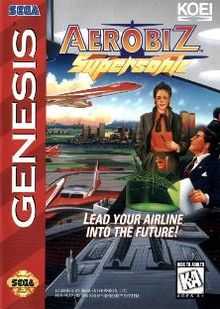 Sega Genesis cover art | |
| Developer(s) | Koei |
| Publisher(s) | Koei |
| Series | Koei Executive Series |
| Platform(s) | Super NES Mega Drive/Genesis |
| Release date(s) | Super NESGenesis |
| Genre(s) | Business simulation |
| Mode(s) | Single-player Multiplayer (up to 4 players) |
| Distribution | 16-megabit cartridge |
Aerobiz Supersonic, known as Air Management II: Kōkū Ō wo Mezase (エアーマネジメントII 航空王をめざせ) in Japan, is a business simulation video game released for the Super Nintendo by Koei in North America in August 1994. It was later ported to the Mega Drive/Genesis. It is a sequel to Koei's previous airline simulation game, Aerobiz.
Gameplay
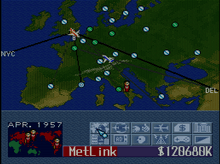
In the game, which is essentially the same as its predecessor, the player is the CEO of a start-up international airline. The player competes with three other such companies (either AI-controlled or other players) for dominance in the worldwide travel industry. Such dominance is obtained by purchasing slots in various airports around the world, and flying routes to and from those slots. Once a route is created, the player has control of what type of planes fly the route, the price of airfare, and numerous other variables.
The game includes numerous historical events that can help or hinder airline performance. Four different eras of play available for the player to choose. They include 1955–1975 (which depicts the dawn of jet airplanes), 1970–1990 (which depicts a period of instability, oil crises, and the end of the Cold War), 1985–2005 (which depicts the present day of economic prosperity and relative stable peace), and 2000–2020 (which depicts the replacement of jet planes with supersonic airplanes, the European Union extending to Russia, and countries trying to get airlines to fund alternative fuel research). This futuristic era was chosen by SG and Koei to be illustrated by San Francisco illustrator Marc Ericksen for the packaging art, showing two executives conferring over a holographic aircraft design in a futuristic airline terminal.
Airlines must be able to achieve the goals assigned to them within 20 years; only one airline can achieve this victory with no draws permitted. If none of the airlines can achieve the goal, then all airlines lose because stalemates are not permitted at the end of the game. Tiebreakers are also not permitted because games are not usually designed to be in ties at the end of the 20-year contest. In the rare instance that all airlines go bankrupt simultaneously, then all airlines would also lose.
Events
Historical events
The simulation includes numerous historical events, including:
- Summer Olympic Games accurate up to Sydney 2000. (Note, the 1976 Summer Olympics were in Montreal, although the game has them in Toronto as Montreal is not in the game. However, some events of these games were held in Toronto, and in other cities throughout Eastern Canada.)
- The downfall of colonialism
- The secession of Singapore from Malaysia
- The Rise of Fidel Castro (1959)
- Suez Crisis
- Vietnam War
- Indo-Pakistani War of 1971
- Yom Kippur War
- An international oil crisis (1973)
- Iran–Iraq War
- Operation Desert Storm
- Perestroika
- Destruction of the Berlin Wall and the reunification of Germany
- Fall of the Soviet Union
- Return of Hong Kong to the People's Republic of China
- Growth of the European Union
Hypothetical events
The simulation also includes hypothetical events, including:
- After 2000, the Summer Olympics start occurring in random selection of the game's major cities.
- Ukraine joining the European Union at JUL 1998.
- Belarus joining the European Union at JAN 1999.
- Switzerland joining the European Union at JUL 2003.
- Russia joining the European Union at OCT 2005.
- Civil war by random cities and random times (Although in the game, they often occur in Lima, Peru, which had a civil war in real time)
- The introduction and quick obsolescence of commercial supersonic aircraft (2007–2016)
- Global oil crisis in the mid-late 2010s
- The nations of the world asking the airlines for money to find alternatives to fossil fuels
- Volcanic eruption in New Zealand
- Floods in Thailand[1] and Vancouver, Canada[2] (both events corresponding with global climate change)
- Earthquake in Sao Paulo
Major players in the game
Eastern Bloc
From the beginning of the game until 1986, the Eastern Bloc countries are stuck with tense relations with Western Europe, North America, and countries in the British Commonwealth. However, they have normal-excellent relations with African countries, Middle Eastern countries, countries in Central America, South America, and some Asian countries. Airplanes from Eastern Bloc countries are small inefficient gas-guzzlers that can only do medium-range flights as their longest routes. After 1986, airlines from these countries can purchase more efficient Boeing planes from the United States of America. These airplanes become even cheaper when one of the Eastern European countries joins the European Union.
Russia enters in EU in 2005, so it will be much cheaper to buy Airbus planes. The latest models from Ilyushin and Tupolev are very cheap and a little bit more efficient than the previous models, so it can give the player an advantage when it comes to maximizing his profits.
Western Bloc
Western Europe
With normal-tense relations with Eastern European countries until around 1985, airlines that are headquartered in Western European countries must either purchase cheap airplanes from the "local" market or order slightly more expensive planes from the United States of America. After Perestroika, they can purchase from any plane manufacturing company. Joining the European Union in the mid-1990s makes airplanes cheaper or more expensive depending on relations with the United States prior to the founding of the EU.
North America
North America's situation in the game is identical to the situation found by Western European countries. The only difference is that planes from American companies are cheaper than planes from Western European countries. Since North America has a higher tourism rating than Europe until the 1990s, North America–based airlines can afford more airplanes and routes for a better risk-profit potential than European-based airlines.
People's Republic of China and other countries
Normalized relations with both the U.S. and the U.S.S.R. allows all planes to be purchased by airlines headquartered in the People's Republic of China regardless of the year. However, improving relations with either country will reduce the price of the airplanes - giving the player a choice of acquiring either inefficient Soviet-made planes or efficient American-made planes at bargain prices. Like the People's Republic of China, countries that are not strongly affiliated with either NATO or Warsaw Pact may purchase from any manufacturer as long as relations are not tense (red). Relations with the country must be at least normal (yellow) in order to purchase airplanes from that country.
Cities
A-M
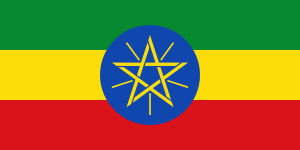 Addis Ababa, Ethiopia
Addis Ababa, Ethiopia Adelaide, South Australia, Australia
Adelaide, South Australia, Australia →
→  Algiers, Algeria
Algiers, Algeria Atlanta, Georgia, USA
Atlanta, Georgia, USA →
→  Athens, Greece
Athens, Greece Auckland, New Zealand
Auckland, New Zealand.svg.png) (not used in game) →
(not used in game) → %3B_Flag_of_Syria_(1963-1972).svg.png) →
→ .svg.png) Baghdad, Iraq
Baghdad, Iraq →
→  Barcelona, Spain
Barcelona, Spain Beijing, China
Beijing, China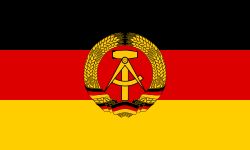 →
→  →
→  Berlin, Germany
Berlin, Germany →
→  Bern, Switzerland
Bern, Switzerland Bombay, India (becomes Mumbai, India in real life by the 21st century)
Bombay, India (becomes Mumbai, India in real life by the 21st century) Brisbane, Queensland, Australia
Brisbane, Queensland, Australia.svg.png) →
→  Brussels, Belgium
Brussels, Belgium Buenos Aires, Argentina
Buenos Aires, Argentina Cairo, Egypt
Cairo, Egypt Calcutta, India
Calcutta, India Cebu, Philippines
Cebu, Philippines Chicago, Illinois, USA
Chicago, Illinois, USA Dallas, Texas, USA
Dallas, Texas, USA Delhi, India
Delhi, India Denver, Colorado, USA
Denver, Colorado, USA Fukuoka, Japan
Fukuoka, Japan →
→ 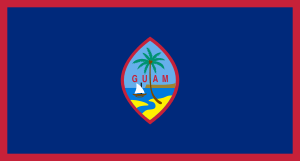 Guam
Guam Havana, Cuba
Havana, Cuba.svg.png) →
→  Hong Kong
Hong Kong Honolulu, Hawaii, USA
Honolulu, Hawaii, USA Houston, Texas, USA
Houston, Texas, USA Islamabad, Pakistan
Islamabad, Pakistan →
→ 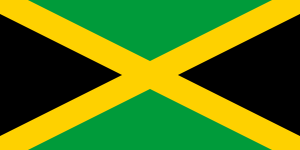 Kingston, Jamaica
Kingston, Jamaica Karachi, Pakistan
Karachi, Pakistan →
→  →
→  Kiev, USSR (becomes Kiev, Ukraine after 1991)
Kiev, USSR (becomes Kiev, Ukraine after 1991) →
→  Lagos, Nigeria
Lagos, Nigeria Lima, Peru
Lima, Peru →
→  London, UK
London, UK Los Angeles, California, USA
Los Angeles, California, USA Manchester, IUK
Manchester, IUK Manila, Philippines
Manila, Philippines Melbourne, Victoria, Australia
Melbourne, Victoria, Australia Mexico City, Mexico
Mexico City, Mexico Miami, Florida, USA
Miami, Florida, USA →
→  →
→  Minsk, Belarus
Minsk, Belarus →
→ .svg.png) →
→  →
→  Moscow, USSR (becomes Moscow, Russia after 1991)
Moscow, USSR (becomes Moscow, Russia after 1991)
N-Z
 →
→ 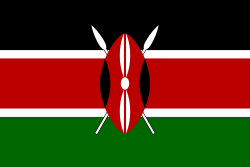 Nairobi, Kenya
Nairobi, Kenya →
→ 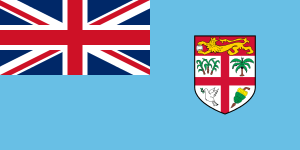 Nandi, Fiji
Nandi, Fiji New York City, New York, USA
New York City, New York, USA Nouméa, New Caledonia
Nouméa, New Caledonia →
→  Oslo, Norway
Oslo, Norway Osaka, Japan
Osaka, Japan Papeete, Tahiti
Papeete, Tahiti →
→  Paris, France
Paris, France Perth, Western Australia, Australia
Perth, Western Australia, Australia Philadelphia, Pennsylvania, USA
Philadelphia, Pennsylvania, USA Phoenix, Arizona, USA
Phoenix, Arizona, USA Rio de Janeiro, Brazil
Rio de Janeiro, Brazil →
→  Rome, Italy
Rome, Italy →
→  →
→  Republic of Singapore
Republic of Singapore Saipan, Mariana Islands
Saipan, Mariana Islands San Francisco, California, USA
San Francisco, California, USA Santiago, Chile
Santiago, Chile São Paulo, Brazil
São Paulo, Brazil Sapporo, Japan
Sapporo, Japan Seattle, Washington, USA
Seattle, Washington, USA Seoul, Korea
Seoul, Korea Shanghai, China
Shanghai, China →
→  Stockholm, Sweden
Stockholm, Sweden Sydney, New South Wales, Australia
Sydney, New South Wales, Australia Taipei, Taiwan
Taipei, Taiwan →
→ 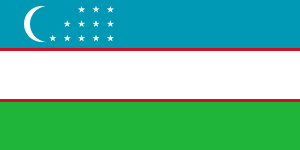 Tashkent, Uzbekistan
Tashkent, Uzbekistan Tehran, Iran
Tehran, Iran Tokyo, Japan
Tokyo, Japan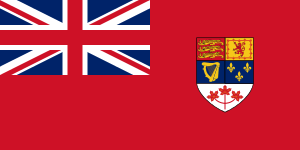 (not used in game) →
(not used in game) → 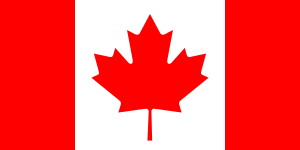 Toronto, Ontario, Canada
Toronto, Ontario, Canada.svg.png) Tripoli, Libya
Tripoli, Libya →
→ 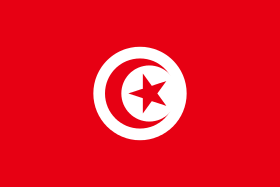 Tunis, Tunisia
Tunis, Tunisia (not used in game) →
(not used in game) →  Vancouver, British Columbia, Canada
Vancouver, British Columbia, Canada →
→  Warsaw, Poland
Warsaw, Poland Washington, District of Columbia, USA
Washington, District of Columbia, USA
Airplanes
American-made
- Boeing 707–120 and 320
- Boeing 727–100 and 200
- Boeing 737-200 and 300
- Boeing 747-200, 300, and 400
- Boeing 747-500 (In reality, the 747-500 project was canceled by Boeing due to lack of interest and later superseded by the Boeing 747-8.)
- Boeing 757
- Boeing 767
- Boeing 777
- Douglas DC-6
- Douglas DC-8 Series 30, Series 50 and Series 60
- McDonnell Douglas DC-9-30
- McDonnell Douglas DC-10
- McDonnell Douglas MD-11
- McDonnell Douglas MD-80
- McDonnell Douglas MD-12 (The stretched MD-11 concept that was later renamed to MD-12X. Not to be confused with the actual double-decker MD-12 prototype)
- Lockheed L-1049 "Super Constellation"
- Lockheed L-1011
Made in Europe
- Airbus A300
- Airbus A300-600
- Airbus A310
- Airbus A320
- Airbus A340
Made in USSR/Russia
- Tupolev Tu-104
- Tupolev Tu-124
- Tupolev Tu-134
- Tupolev Tu-144
- Tupolev Tu-154
- Tupolev Tu-154B
- Tupolev Tu-204
Fictional
Several fictional airplanes were introduced in the fourth playing scenario (2000–2020). In real life, McDonnell Douglas and Boeing merged in 1997. To date, none of these model numbers have been used on real life planes (Airbus has A300 to A350, and then A380, it is unknown whether they will use the A360 and/or A370 designations in the future).
- Airbus A360
- Airbus A370
- Airbus A700
- Airbus A720
- Boeing 2000-HJ
- Boeing 2001-SST
- McDonnell Douglas MD-100
- McDonnell Douglas MD-1
Reception
Electronic Gaming Monthly gave the Super NES version a 7.2 out of 10, deeming it "a different type of game - one geared more toward strategy."[3] They gave the later Genesis version a 6.6 out of 10 and opined that "As always, Koei manages to take a unique strategy game that becomes very entertaining when you really get into it."[4]
References
- ↑ Hypothetical flooding of Thailand at flood.firetree.net
- ↑ Hypothetical flooding of Vancouver, Canada at flood.firetree.net
- ↑ "Review Crew: Aerobiz Supersonic". Electronic Gaming Monthly (59) (EGM Media, LLC). June 1994. p. 33.
- ↑ "Review Crew: Aerobiz Supersonic". Electronic Gaming Monthly (Ziff Davis) (66): 40. January 1995.